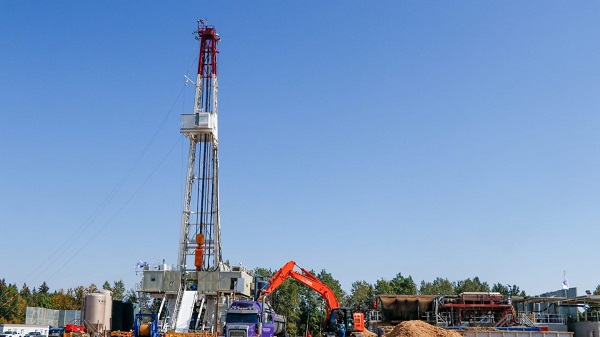Alberta
Alberta Blue Cross shares essential summer safety tips

Alberta Blue Cross shares essential summer safety tips
Plan ahead to be prepared for any situation this summer.
COVID-19 has impacted summer vacation plans for many Albertans, but the pandemic has not stopped the arrival of summer. While large social gatherings and events like festivals and outdoor concerts aren’t permitted this summer, the opportunity to spend time outdoors and travel within Alberta, responsibly, are still possible.
As a partner in Alberta’s preventable injury campaign and an organization committed to health promotion, Alberta Blue Cross® encourages Albertans to have a safe and active summer.
- Practice sun safety.
Avoid sunburns by using a broad-spectrum sunscreen with a Sun Protection Factor (SPF) of at least SPF 30. Generously apply it 20 minutes before going outside and reapply frequently. Don’t forget about your face and eyes—protect them by wearing a hat and sunglasses with an ultraviolet (UV) A/B certified seal. With kids being more sensitive to sunlight, it’s even more important they’re protected when outside for even short periods.
- Stay cool and hydrated.
Sunshine and high temperatures increase your risk of sunstroke and heat exhaustion—both can be life-threatening for infants, young children and seniors. To avoid this, stay hydrated by drinking lots of water and other non-alcoholic, non-caffeinated drinks. Increase your vitamin C intake—it provides a natural defense against heat stroke, exhaustion and heat rash. Make sure to stay cool by wearing light-coloured clothing and seeking shade often. Never leave children or pets inside a parked vehicle.
- Be safe in and on the water.
No one plans to drown, but dozens of individuals die in water-related accidents each year in Alberta. According to the 2019 Alberta Drowning Report, 220 people drowned in Alberta from 2012 to 2016, with males aged 20 to 34 years as the most common victims of drowning-related deaths. Most drownings occur in lakes, ponds and rivers—even as a good swimmer, you’re at risk of drowning if you fall out of a boat or are in an accident. When visiting bodies of water, make sure you and your family are equipped with life jackets that are properly fitted to each individual and approved by Transport Canada. Children can drown in as little as one inch of water, so never leave them unsupervised in or near water.
- Avoid pesky bug bites.
While the risk of getting a serious disease from a bug bite in Alberta is low, it’s important to be aware of the risks and how you can prevent them. Cover up with light-coloured clothing, which is less attractive to mosquitoes and allows you to see ticks easily. Wear insect repellent but apply sunscreen first. After being outside, check yourself, your children and pets for any ticks or bug bites. If you find a bug bite, follow proper instructions on how to treat it quickly to reduce the chance of infection or disease. You can find treatment instructions on MyHealth.Alberta.ca or by calling Health Link at 811.
- Play safe.
Make sure that backyard and playground equipment is properly secured to the ground and teach children how to play safely. Be especially careful around recreational trampolines, which are an increasing cause of injuries among children—and ensure all trampolines contain a safety net enclosure and that any use is closely supervised. Always supervise children playing outdoors if they’re under the age of 12—be attentive and close enough to act if needed.
- Wear a helmet.
To protect yourself from injury, it’s important to wear a helmet when on a bicycle, skateboard, scooter, rollerblades or when operating a motorized off-road vehicle. Alberta laws require helmets be worn by anyone operating a motorcycle or an off-highway vehicle—for example, an all-terrain vehicle (ATV). Albertans under the age of 18 are also required to wear a helmet when cycling. Make sure your helmet fits properly—it should be snug, level front-to-back, sit an inch above your eyebrows and allow for two fingers to fit between your chin and the strap.
- Camp safely.
Plan to be prepared for any situation when camping. Bring a map of the area and make sure someone is aware of where you’re headed—especially if there’s no cellphone service. Bring clothing for all types of weather and always pack an emergency kit with a flashlight, a radio, extra batteries and medical supplies. Avoid attracting bears to your campsite by keeping food, garbage and recyclables inside a vehicle, hard-sided trailer or bear-proof container. In the event of severe weather, seek shelter in a building or metal-roofed vehicle—never stay in your tent. Prior to your trip, be sure to check the Alberta Parks website for the most up-to-date information on camping regulations.
- Keep food fresh.
Prepare and handle foods safely to reduce the risk of food-borne illness—especially when barbequing or going outdoors. Wash your hands thoroughly before and after handling food. Use hand sanitizer if you’re camping or on a picnic. Keep food between 4 and 6°C to prevent growth of harmful bacteria. Discard any cooked food that has been at room temperature for more than two hours. When in doubt, throw it out!
- Protect your home.
Follow some of these simple tips to decrease the possibility of someone breaking into your home while you’re away on vacation—even short ones. If you’re going to mention your trip on social media, make sure your profile and status updates are set to private. While away, avoid geotagging pictures or adding the location to public status and story updates. Have friends or neighbours check in on your home to bring in mail and packages or identify any leaks or hazards that could become bigger problems. As a bonus, their visits will make potential criminals think your house is occupied.
- Keep an eye on the sky.
As you know, summer weather conditions in Alberta can change fast. Severe weather like heavy winds, hailstorms or tornadoes can be life-threatening. Before you head out, be sure to check the weather forecast. While outside, keep an eye on the sky, keep a radio or your mobile phone nearby to be aware of any weather advisories, and have a plan to find shelter should a storm arise.
Alberta
This new Canada–Alberta pipeline agreement will cost you more than you think


Canada and Alberta’s new net-zero energy deal is being promoted as progress, but it also brings rising costs. In this video, I break down the increase to Alberta’s industrial carbon price, how those costs can raise fuel, heating, and grocery prices, and why taxpayer-funded carbon-capture projects and potential pipeline delays could add even more. Here’s what this agreement could mean for Canadians.
Watch Nataliya Bankert’s latest video.
Alberta
Alberta will defend law-abiding gun owners who defend themselves

Alberta’s government will introduce a motion under the Alberta Sovereignty within a United Canada Act to defend law-abiding firearms owners.
A new motion under the Alberta Sovereignty within a United Canada Act will, if passed by the legislature, instruct all provincial entities, including law-enforcement agencies such as municipal police services and the RCMP, to decline to enforce or implement the federal gun seizure program. The motion also makes clear that Albertans have the right to use reasonable force to defend themselves, their families and their homes from intruders.
This builds on the steps Alberta has already taken to reduce crime, strengthen public safety and assert provincial jurisdiction over firearms. This includes passing the Alberta Firearms Act to establish the Alberta Chief Firearms Office, along with the Alberta Firearms Regulation and the Seizure Agent and Provider Licensing Regulation.
“It’s time for Ottawa to stop targeting the wrong people. Albertans have the right to protect their homes and their families. No one should hesitate to defend themselves when faced with a threat at their own doorway. Law-abiding citizens, hunters, farmers and sport shooters are not the source of violent crime, yet the federal government wants to confiscate their property while illegal guns pour across our borders. Alberta will not stand by while responsible gun owners are treated like criminals. This motion is about using every legal tool we have to protect their rights, uphold public safety and push back on federal overreach into provincial jurisdiction.”
“When someone breaks into your home, the law recognizes that you have enhanced rights to protect yourself and your family. Alberta is making that principle unmistakably clear: lawful, reasonable self-defence will be respected, not criminalized.”
“As an experienced former law enforcement officer, law-abiding gun owners have never been an issue, in my own personal experience, nor has there been any data to support that law-abiding gun owners are the ones that are committing violent gun crimes. The illegal guns that you see being used by criminals are typically being smuggled in from the United States. The federal government should help us strengthen the border, helping us to stop illegal guns from coming into Canada. This would further enhance safety and security for the people of Alberta and Canada as opposed to going after lawful gun owners.”
Under the Alberta Firearms Regulation, municipalities, law enforcement and police commissions must obtain approval from Alberta’s Minister of Justice before accepting funding to participate in the Assault-Style Firearms Compensation Program.
“Misguided federal initiatives such as the handgun transfer ban and the Order in Council firearms prohibitions of 2020, 2024 and 2025 have had a devastating impact on the safe, legitimate activities of the firearms community and the businesses that support it, while having no discernible effect on criminal activity. I am proud to see that the Alberta government is pushing back and supporting lawful firearms owners through these measures.”
“Licensed gun owners and all Albertans can rest assured that their government, under the leadership of the UCP, is laser focused on protecting law abiding citizens while prioritizing real public safety.”
“The Alberta Hunter Education Instructors Association will continue to support our government and the Alberta chief firearms officer in our joint quest to use safety training and education as the key tools to ensure we have safer streets and communities. Safe and responsible use of firearms in Alberta is a key part of our heritage, culture, and our rich and precious heritage.”
Key facts:
- Pursuant to the Attorney General’s recent guidance protocols, Alberta’s prosecutors will decline to prosecute offences under the federal gun seizure program when it is not in the public interest.
- The Attorney General’s recent guidance protocol directs prosecutors to not prosecute home defence offences when it is not in the public interest.
- Total spending on the federal Assault-Style Firearms Compensation Program is expected to exceed $750 million.
- The firearms motion considers the Alberta Bill of Rights, the Constitution Act, 1867 and the Criminal Code.
- Currently 10 per cent of adult Albertans are licenced to use and own firearms. There are 381,900 firearms licences in Alberta.
- Alberta has 638 licensed firearms businesses, 138 shooting ranges and 91 shooting clubs.
-

 National2 days ago
National2 days agoMedia bound to pay the price for selling their freedom to (selectively) offend
-

 Business2 days ago
Business2 days agoIs there a cure for Alzheimer’s Disease?
-

 C2C Journal2 days ago
C2C Journal2 days agoLearning the Truth about “Children’s Graves” and Residential Schools is More Important than Ever
-

 Bruce Dowbiggin2 days ago
Bruce Dowbiggin2 days agoSometimes An Ingrate Nation Pt. 2: The Great One Makes His Choice
-

 Alberta2 days ago
Alberta2 days agoNew era of police accountability
-

 Brownstone Institute2 days ago
Brownstone Institute2 days agoThe Unmasking of Vaccine Science
-

 Alberta2 days ago
Alberta2 days agoEmissions Reduction Alberta offering financial boost for the next transformative drilling idea
-

 Business19 hours ago
Business19 hours agoRecent price declines don’t solve Toronto’s housing affordability crisis






